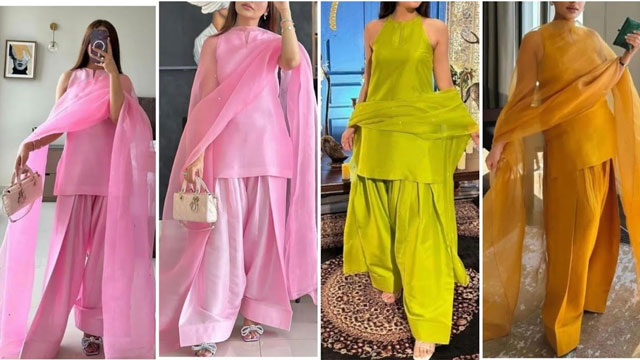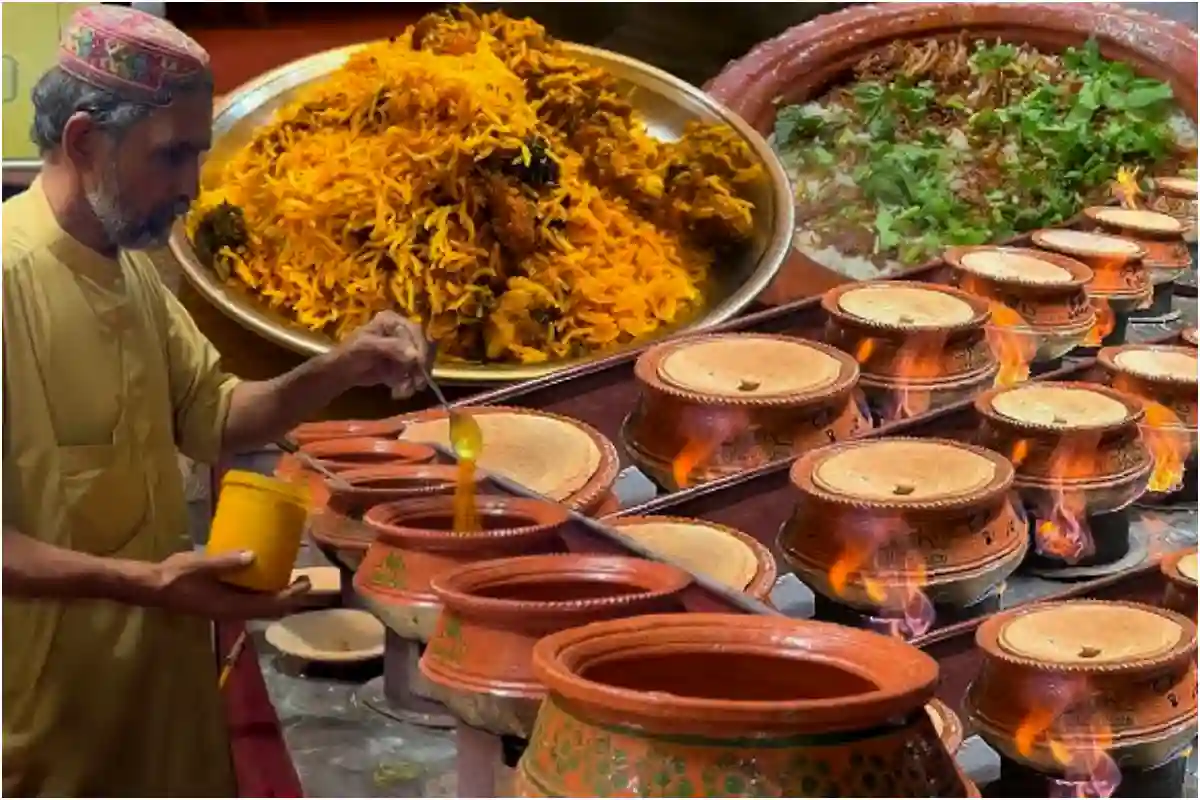The Farshi Shalwar has taken social media by storm, captivating fashion designers, brands, and enthusiasts alike.
This resurgence has sparked a debate over who deserves credit for reviving this grand and regal Mughal-era fashion in Pakistan.
Many believe that designer Hussain Nehar played a pivotal role in bringing the Farshi Shalwar back into the spotlight, while others attribute its resurgence to model Sadaf Kanwal, whose signature aesthetic embraces timeless elegance and rich color palettes.
Kanwal has been seen wearing Farshi Shalwar ensembles for quite some time, often pairing them with short shirts to create a modern yet classic fusion.
A Nod to Mughal-Era Grandeur
Rooted in South Asian heritage, the Farshi Shalwar is a symbol of opulence and sophistication. Its name originates from the Persian word Farsh, meaning “floor,” referencing the garment’s signature long, flowing fabric that gracefully trails behind, evoking a majestic silhouette reminiscent of the Mughal era.
This revival is not just about fashion—it’s a renewed appreciation for cultural heritage. Designers are infusing new life into the Farshi Shalwar by incorporating luxurious fabrics, intricate embroidery, and contemporary cuts, making it a statement piece for weddings and grand occasions.
As this trend continues to gain momentum, it reaffirms the enduring appeal of traditional South Asian attire, seamlessly blending history with modern elegance. Whether it’s through Nehar’s creative reinvention or Kanwal’s effortless styling, one thing is certain—the Farshi Shalwar is here to stay.















